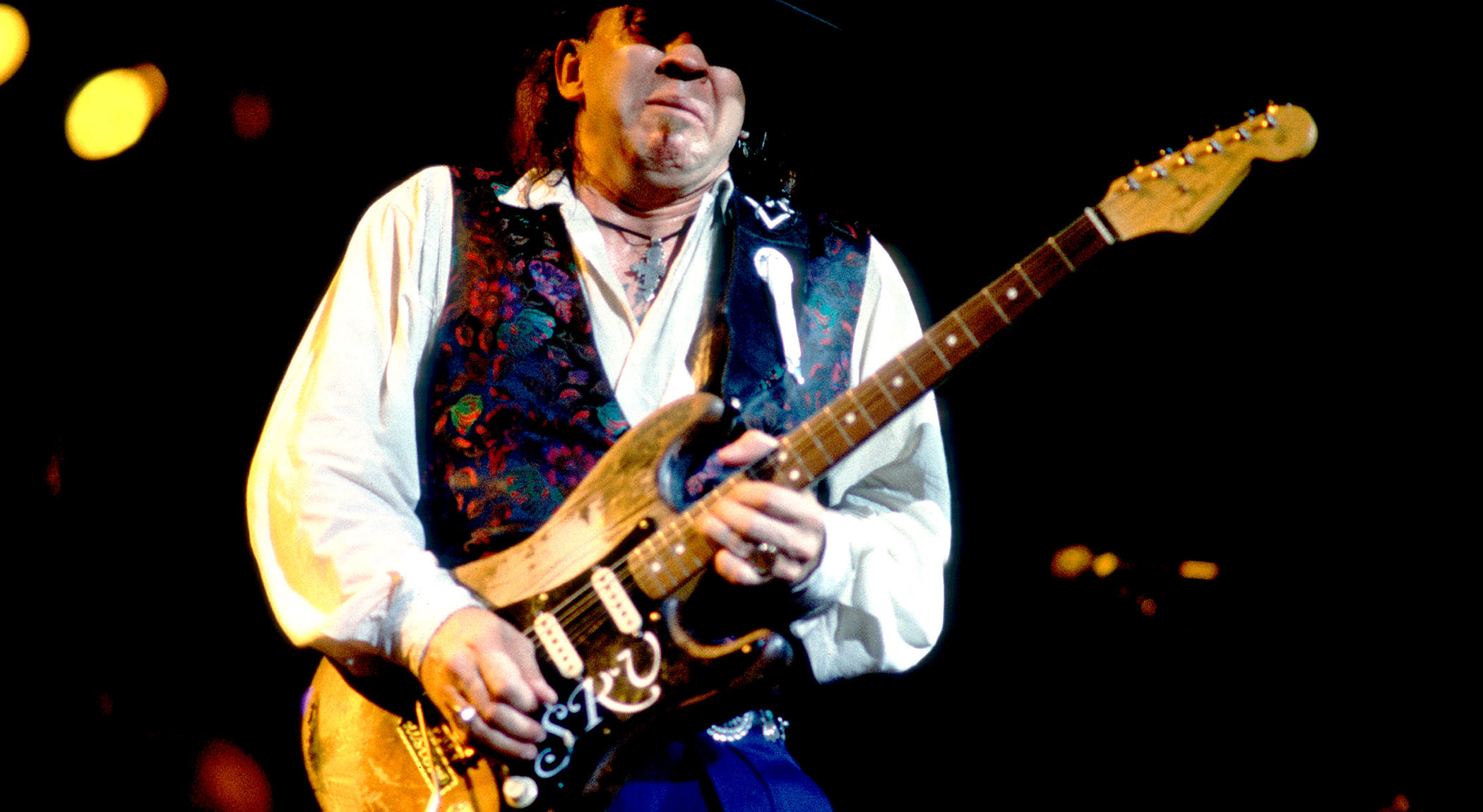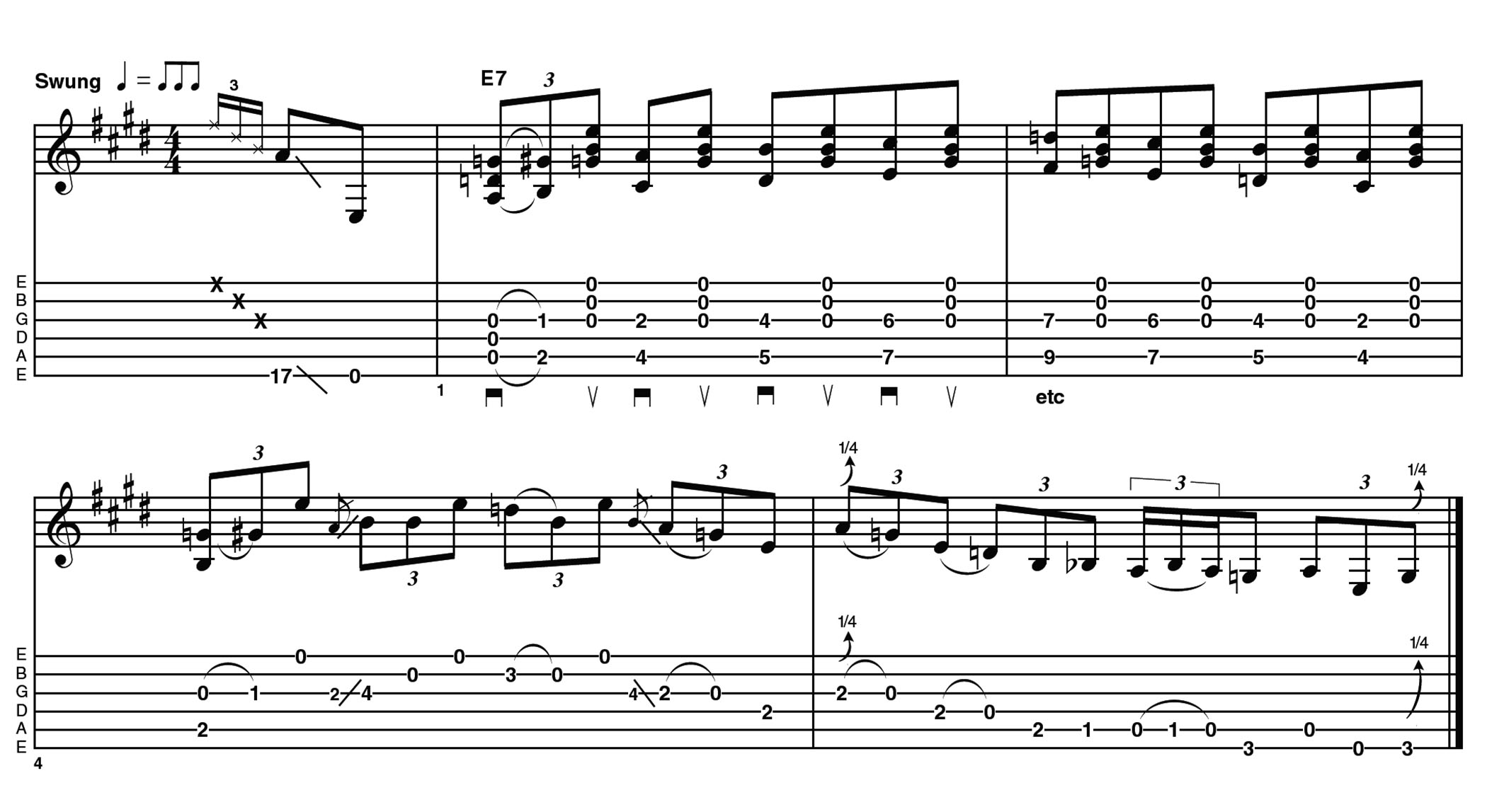
Whether you’re a pro musician or play with bands in your spare time, chances are you’ll spend the majority of your time fulfilling rhythm guitar duties.
You’re certainly not alone in this – many great soloists are also fantastic rhythm players, covering both rhythm and lead parts and frequently blurring the lines between the two. Jimi Hendrix and Stevie Ray Vaughan are great examples of this blending of styles, with the solo/examples here (broadly speaking) inspired by the latter.
We’re working in a ‘trio’ format, with just bass and drums for support, so we need to cover harmonic, melodic and rhythmic areas far more comprehensively than we would in a conventional lead/rhythm or guitar/keyboards line-up. Linking chords with pentatonic embellishments via an awareness of the CAGED patterns really helps when exploring these ideas.
I’ve opted for a fairly low-gain sound, which allows the notes of any chords to come through clearly. Even so, I’ve taken care to mute unwanted strings, as shown with the open fourth string in Example 1.
I’ve also kept the options as open as possible by keeping the bass moving to support the guitar, and avoided – or at least avoided lingering on – major or minor 3rds, so you can switch between the two or be ambiguous about it, which is such a hallmark of this style.
In the context of a song, details such as this are often more rigid, but it’s nice to have the freedom to treat this as more of a ‘freestyle jam’ – a safe place to take risks as a learning experience.
You’ll see that I’ve taken groups of chords/inversions and superimposed them over what the bass often implies as a single chord. There are also a few (hopefully) useful pentatonic phrasing ideas. Hope you enjoy this and see you next time!
Example 1

After a cheeky slide down the sixth string to set the mood, this example features several useful chord shapes based around E major.
Note the open fourth string is muted; it does feature in the very first hit of bar 1, but from then on I’m using my fretting hand fingers to stop it ringing as this would negatively affect the clarity. For ease of reading, I haven’t marked these muted hits on the transcription: if the tab doesn’t say it, don’t play it!
Example 2

Moving on to an implied A chord, this example follows a similar template to Example 1. There are a few useful and interesting chord ideas leading to a couple of pentatonic licks at the end.
Also like Example 1, there’s a strong swing feel, using upstrokes on the muted or open strings to give the illusion of another rhythm guitarist playing at the same time. It pays to experiment with ideas such as this because there are many more possibilities to be explored, not just what’s written here.
Example 3

As in Example 1, I’m muting unwanted strings to keep things clear – in this case, the fourth string in those B7 and C7 chords. From bar 3, I’m experimenting with different inversions and adding some pentatonic embellishments, which fall under the fingers quite easily with these shapes.
This is quite a simple principle, but it is key when coming up with these kinds of guitar parts. As with the other examples, I’ve played a more bluesy pentatonic lick to link with the next idea.
Example 4

There’s a more ‘solo guitar’ approach to this final example, something I felt free to do having established a good strong harmonic basis with the earlier chords. I’m mixing open and fretted strings, and being deliberately dissonant at times.
After playing around with a shape 1 open-position E minor pentatonic, we move to a ringing open-position B7, before finishing with a classic ‘when-I woke-up-this-morning’ style blues riff!
Hear it here
Stevie Ray Vaughan And Double Trouble – Texas Flood
Recorded back in late 1982 but not released until the following year, this is essentially a live album, recorded ‘off the studio floor‘ in just a few days.
Listen to Pride And Joy and you’ll hear this was a big influence on these examples. Elsewhere, check out Rude Mood as well as Mary Had A Little Lamb for further examples of the way Stevie would fill out the sound by combining bluesy licks with chords and rhythmic playing.
John Mayer Trio – Try! Live In Concert
This 2005 live recording covers a few different styles – but, most importantly, amply demonstrates John Mayer’s ability to seamlessly combine rhythm and lead (and vocals!) in one go.
Make sure you check out Who Did You Think I Was, Gravity and Out Of My Mind for further examples, although it’s well worth a listen to all the other tracks here, too. Live trio-based albums are a great hunting ground for ideas to fill out the sound and keep things interesting.
Jimi Hendrix – Band of Gypsys
Carrying on with the ‘live trio’ theme, this album is also a definitive example. Jimi covers both rhythm and lead playing, using a selection of interesting chord voicings, rhythms and sometimes just playing riffs in unison with the bass.
Check out Who Knows, Message To Love and We Gotta Live Together to hear lots of examples and a few underlying principles such as combining CAGED chords and pentatonic shapes to blur the line between rhythm and lead guitar.







